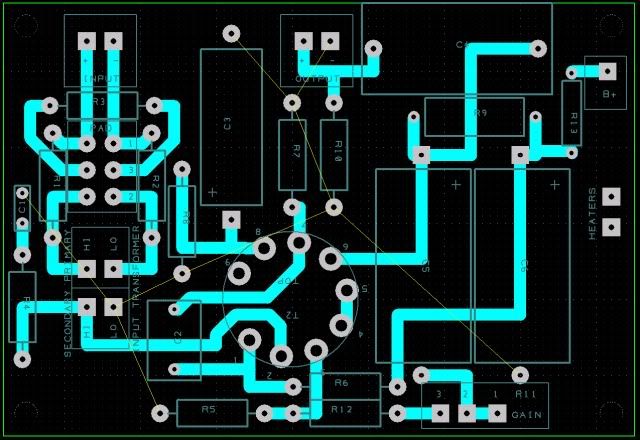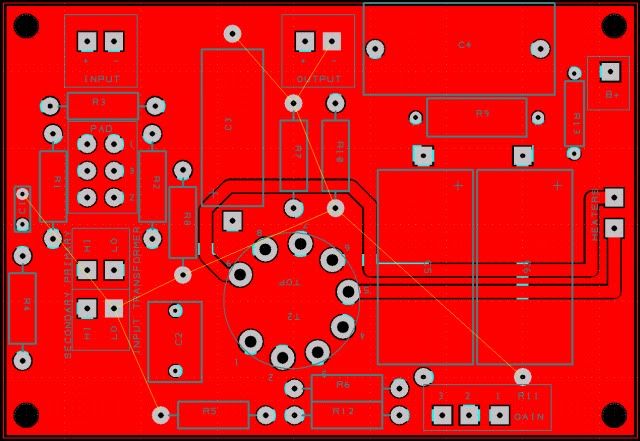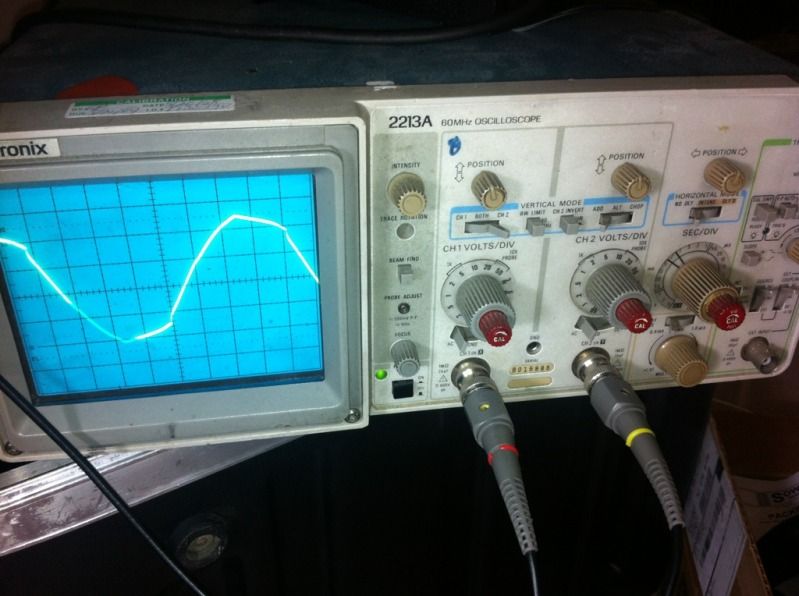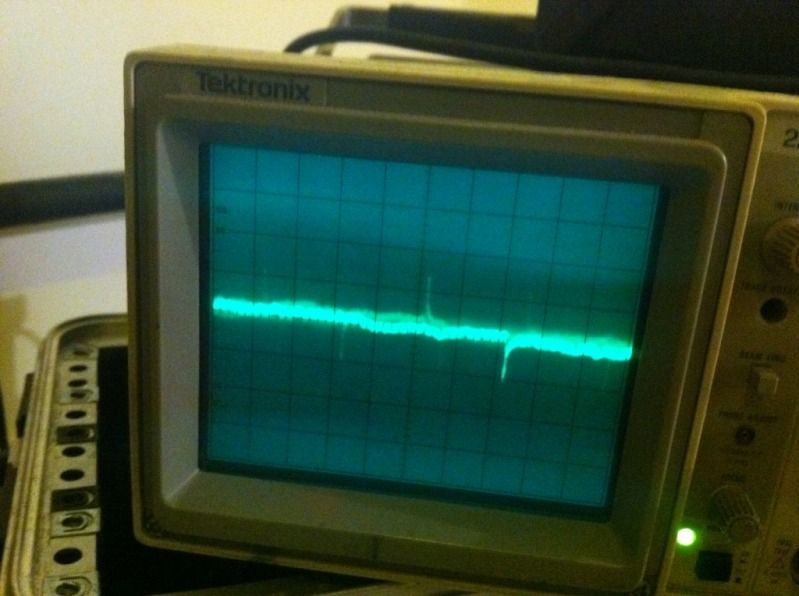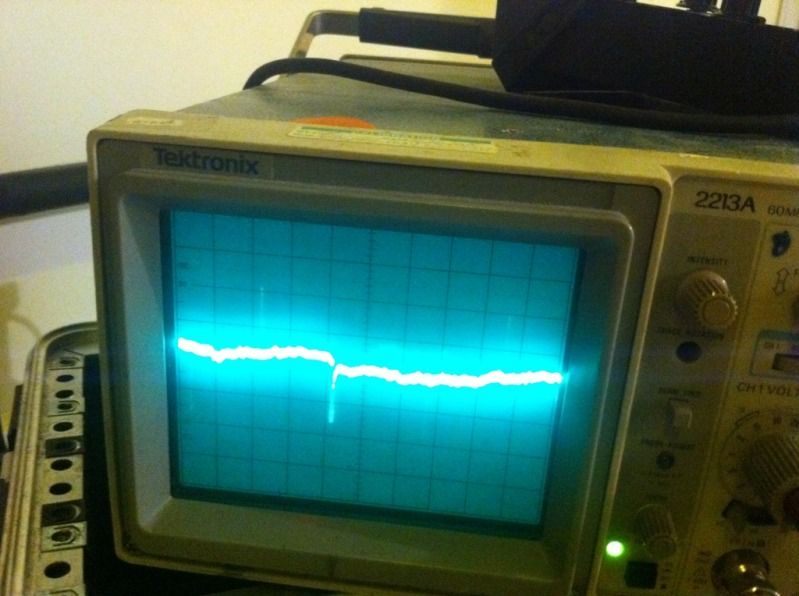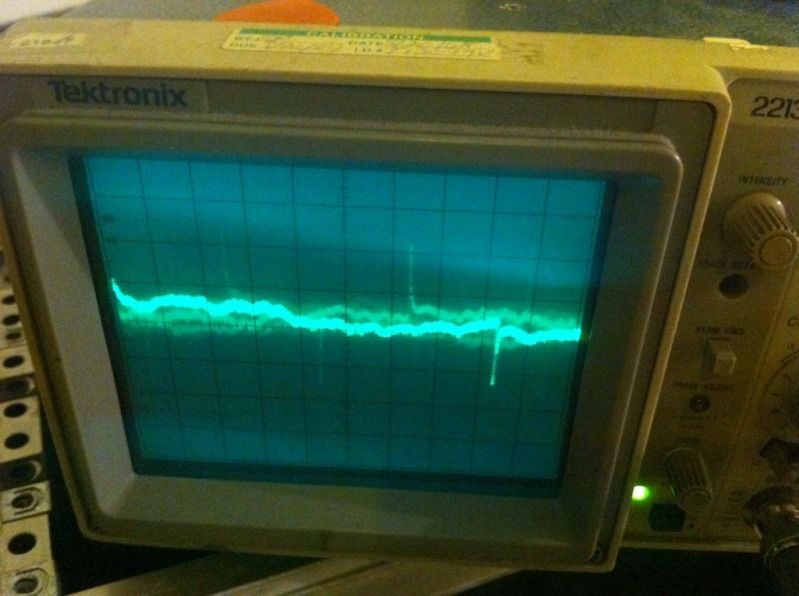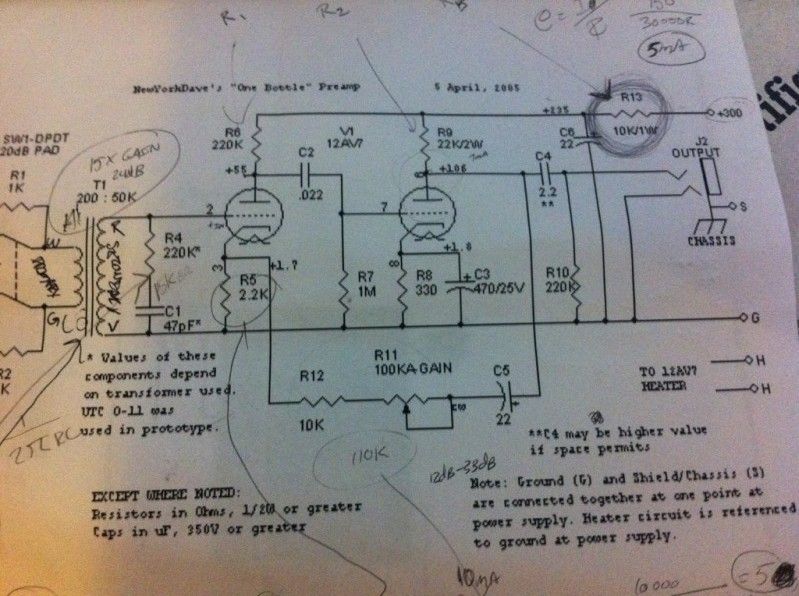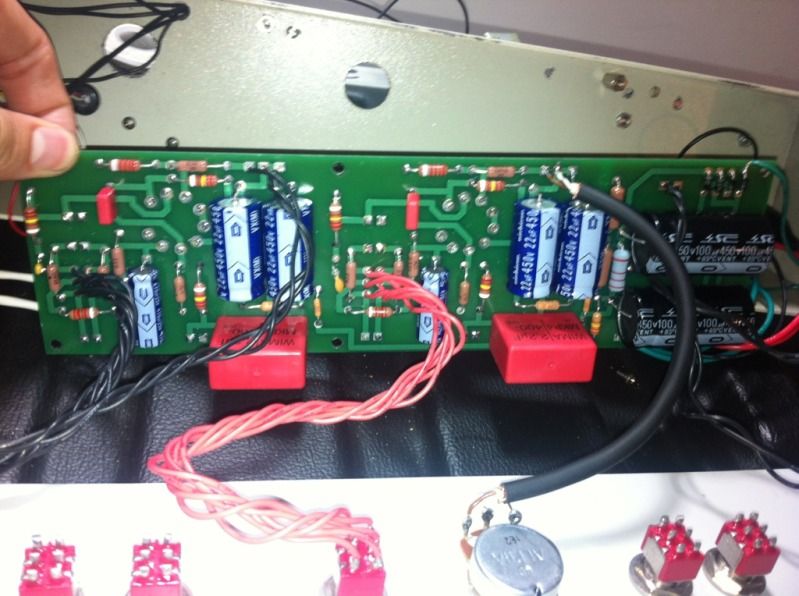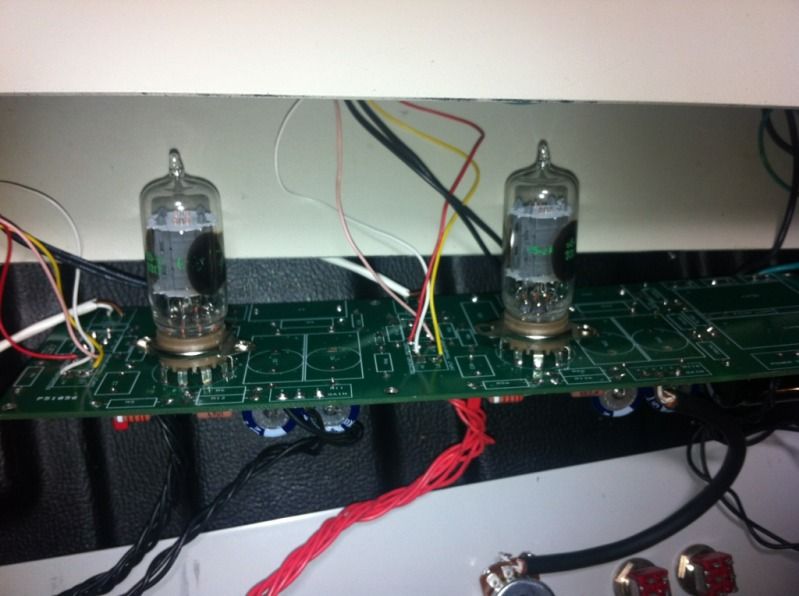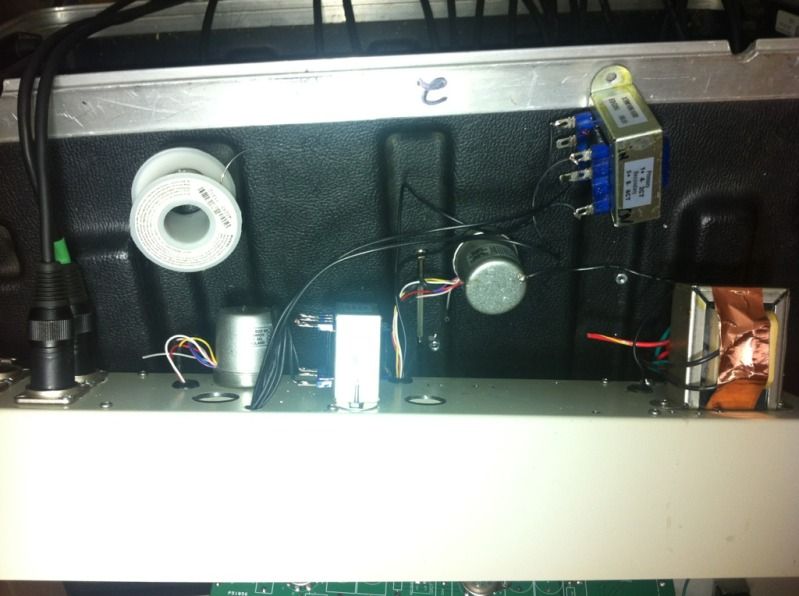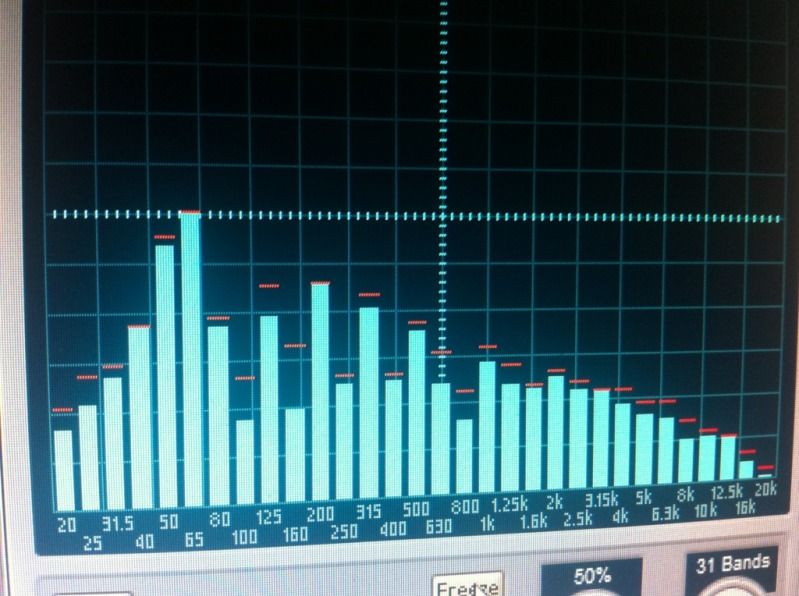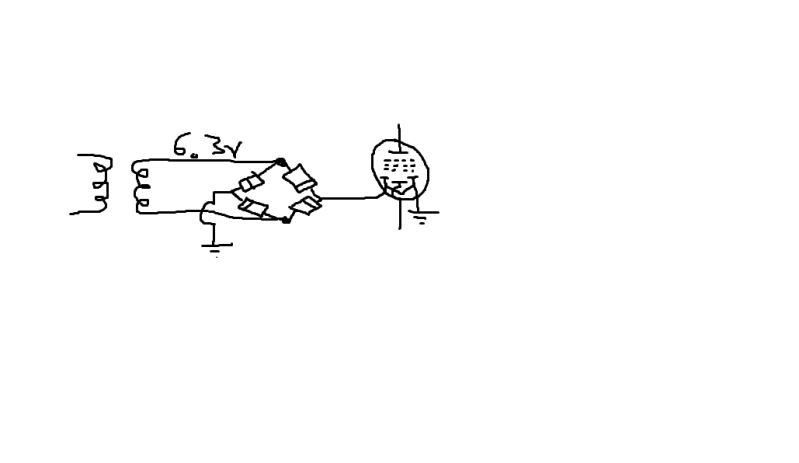Hey all,
I am having some trouble with a NYD one bottle.
Here is what I have tried:
I grounded the outside of the input transformer which did lower the buzzing. This was not necessary on the other channel. The L channel is totally clean.
I have moved my transformers around (this did nothing)
I changed the wire on the pot to shielded redco 3 line (this did nothing)
I have bypassed my heater traces on the PCB with wires. This was done on the prototype board, not on this one. the prototype also had a buzz in this channel (this did nothing on the proto).
note, on the printed test run of these boards, they are doubled on the PCB, AKA 2 pres per board
Here is the layout:
Here is what the AC for the heaters looks like coming in from the power xfrmr (scope is at 2v per division):
Here is my audio at R12 (scope set to 50m):
Here is my audio at pin 2 of the gain pot (scope set to 10m):
Here is my audio at the output coupling capacitor (scope set to 10m):
The signal looks like clean dc from the 300V mains supply rail.
There is no buzzing or distortion on pin 7 of the pentode.
It starts post the R12 and works its way to the output cap and then through the transformer.
Here is the schemo:
Here are some build pics:
Here are some pics (please excuse the messy wiring, I plan to clean it up).
Thanks in advance and regardless



